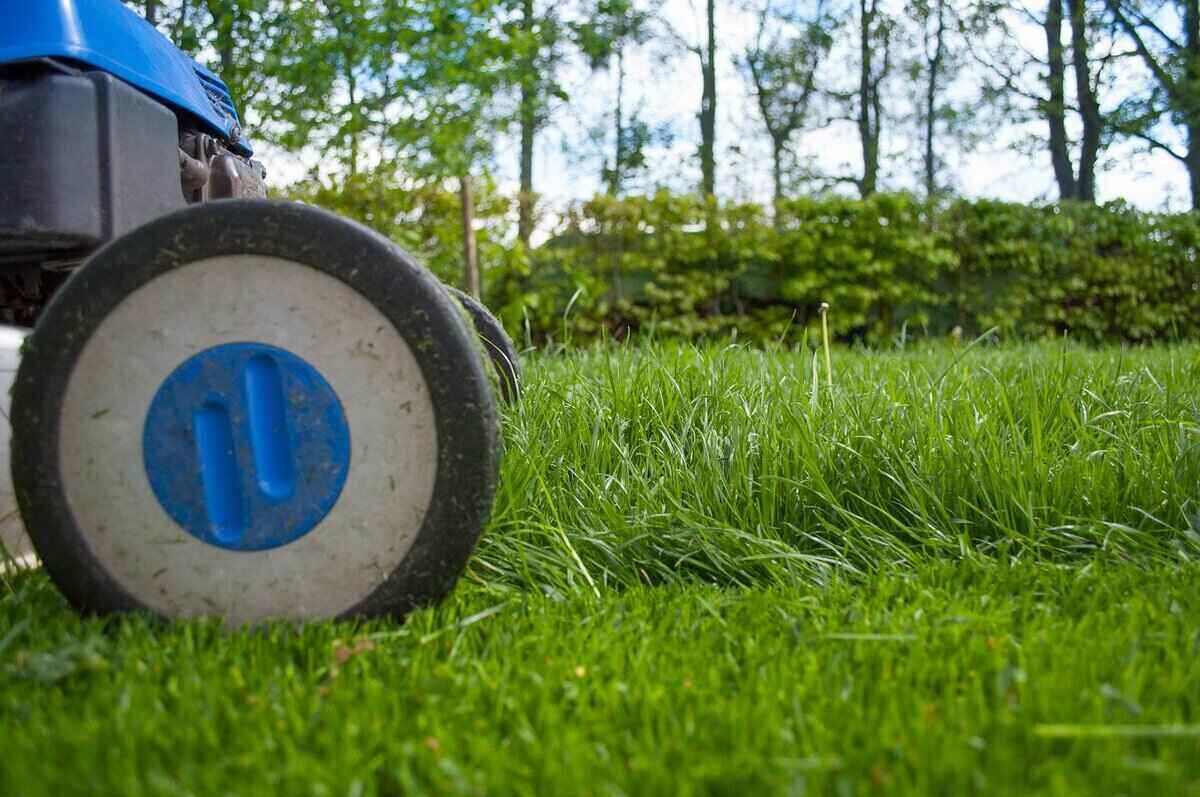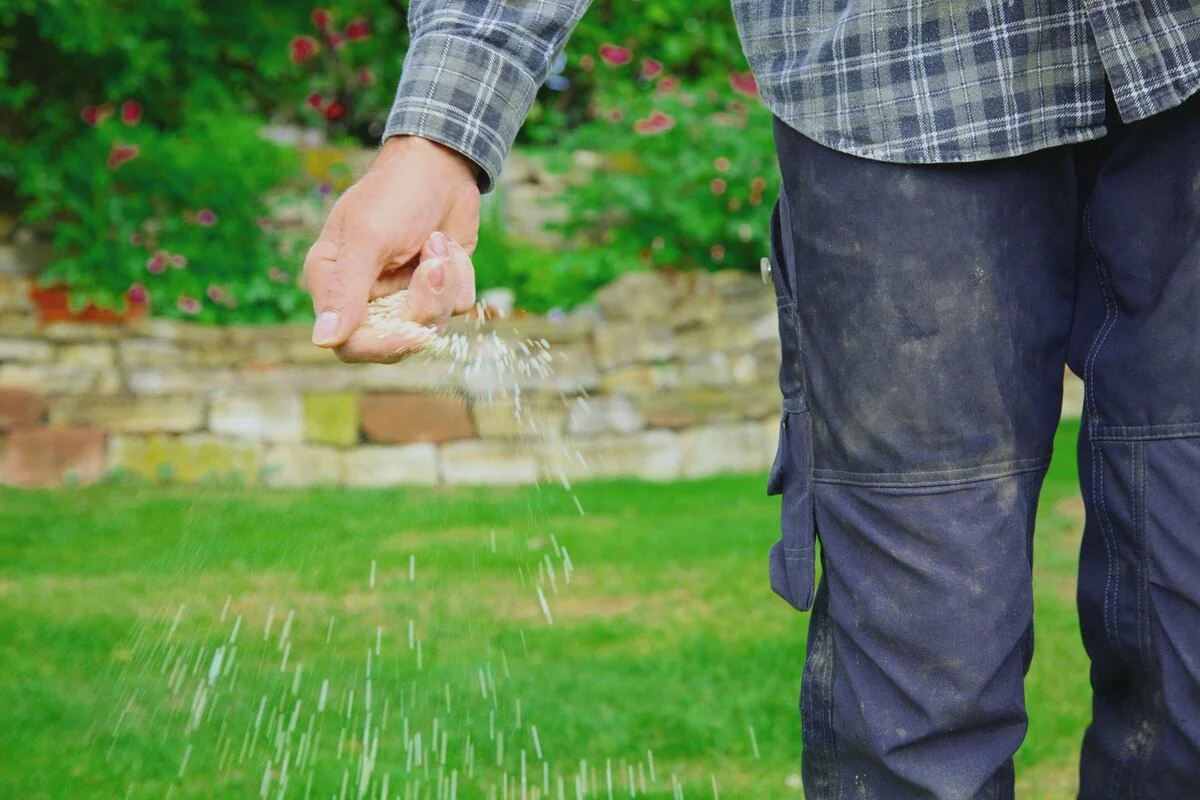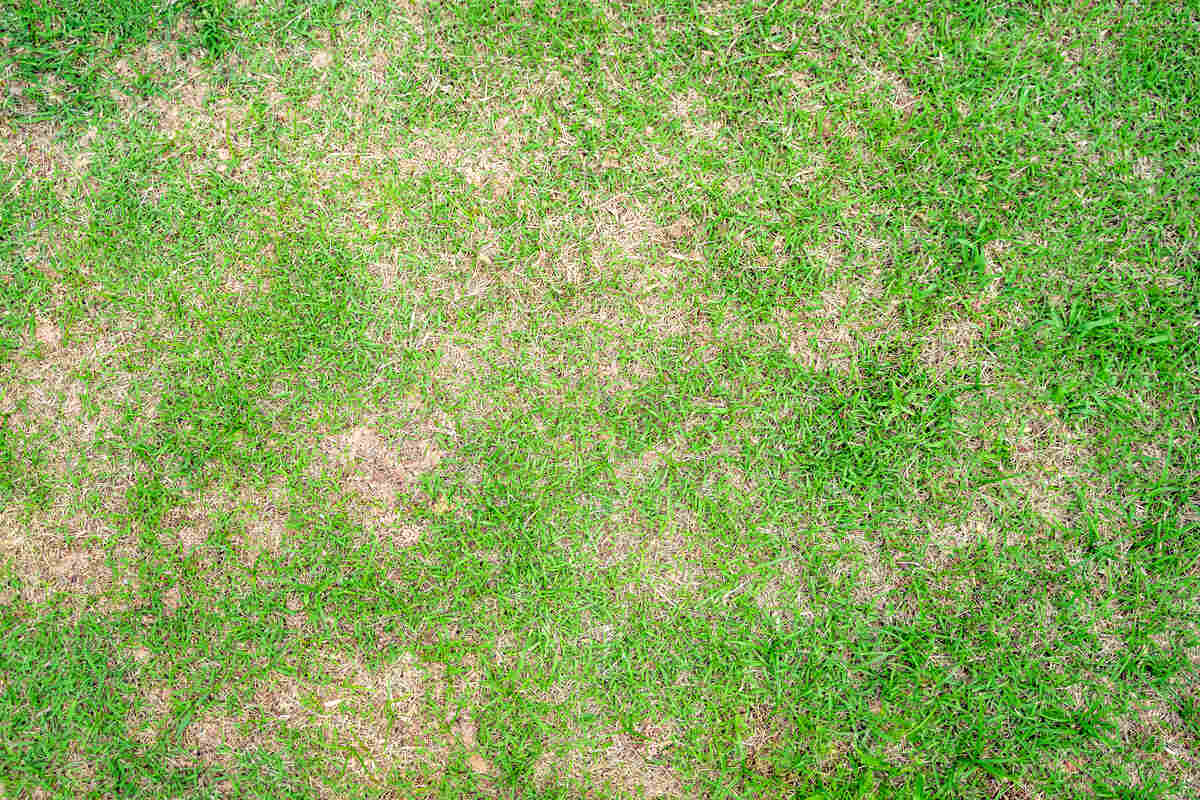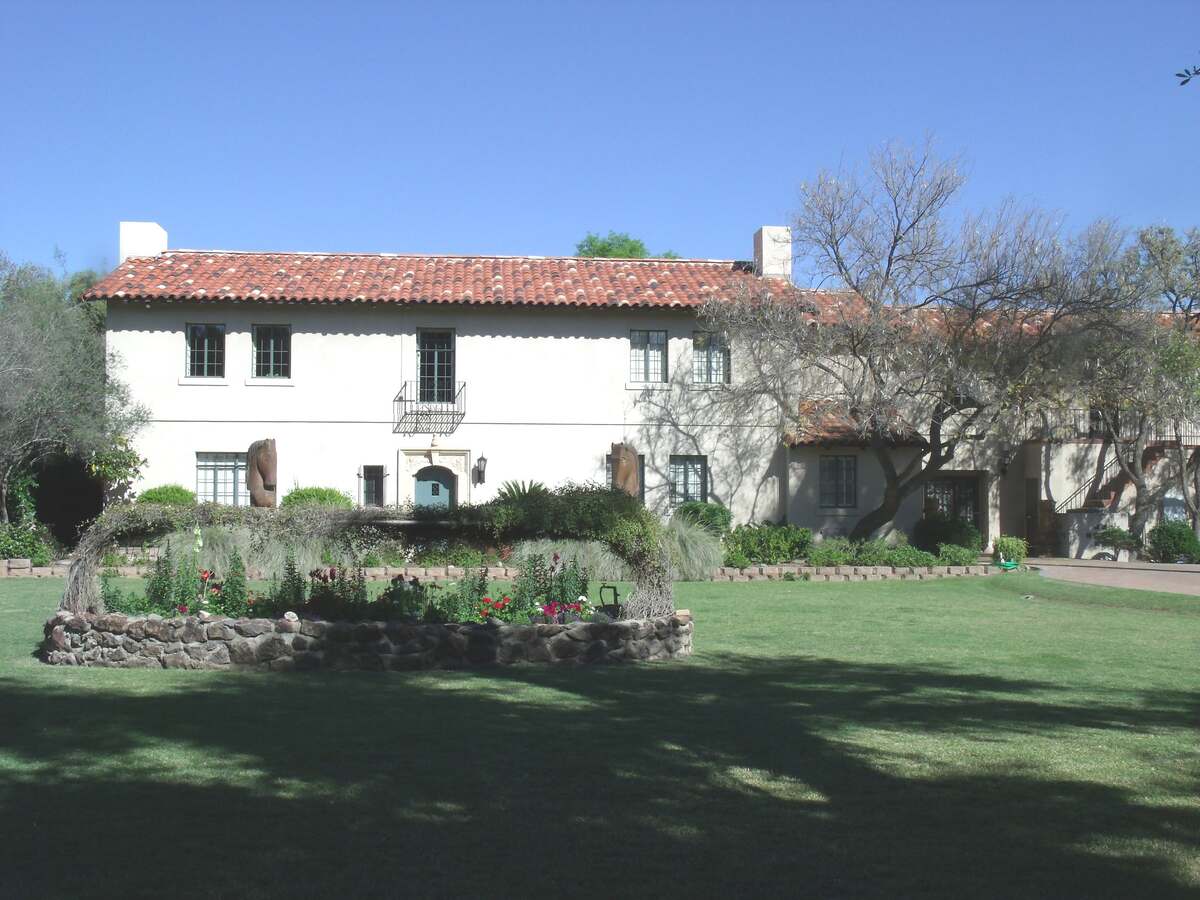
Close your eyes and picture the perfect lawn: green, thick, and uniform. Maybe it has perfect stripes. Maybe kids are throwing a baseball and a grill is smoking in the corner. But what if you want that lovely lawn where water is scarce? Say, in a desert? With proper lawn care techniques, you can have a sustainable lawn in the desert using minimal water and resources.
“You can have a lawn wherever you want,” says Jackson Powers, a science student in the master’s program at New Mexico State University (NMSU), who studies water conservation and turfgrass systems. Even in an extremely dry climate, the dream of that perfect lawn is possible. And you can do it without using the gross domestic water product of a small country.
Start Off With the Right Grass
In any desert area, from the low desert of Palm Springs, Calif., to the high desert areas of Arizona and New Mexico, growing grass in the desert starts with choosing the right type of grass.
It might seem that growing a lawn full of turfgrass isn’t a good idea if you live in a desert community. But that’s not the case. In fact, the University of Nevada Cooperative Extension says the question isn’t whether turfgrass should be used in desert communities, but how.
Turfgrasses play an important role in desert landscapes. They reduce water runoff and carbon dioxide emissions and mitigate the heat. But when it comes to deciding which type, though, two factors dictate the best species to use: water use and intended purpose.
Cool-Season Vs. Warm-Season Grasses
Turfgrass comes in two types, based on when they grow best. If your goal is water conservation, warm-season turfgrasses are likely the better choice. Cool-season grasses use as much as 20% more water throughout the summer than warm-season grasses.
But which grass will work best for you? It depends on where you live.
Cool-Season Grasses
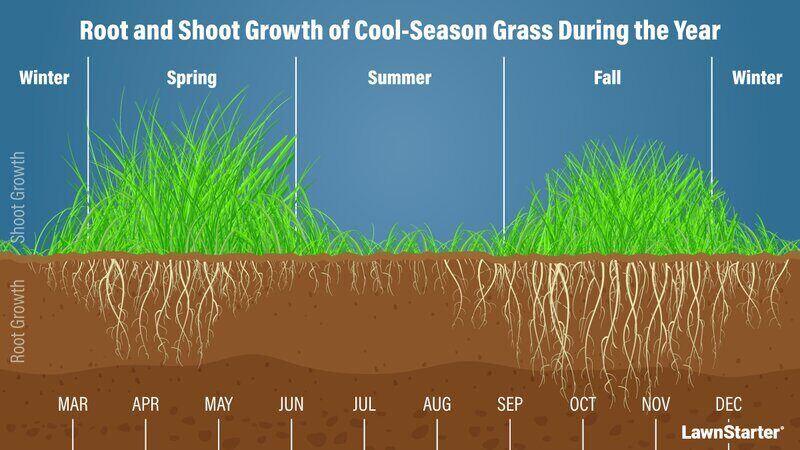
Generally found in areas with cold winters and warm summers, cool-season grasses include Kentucky bluegrass, perennial ryegrass, fine fescue, and tall fescue. Cool-season grasses prevail in higher-elevation Northern New Mexico, for example.
Bonnie Hopkins, an agricultural agent with New Mexico State’s Extension service in San Juan County, says she recommends a blend of tall fescue and Kentucky bluegrass for her area. The variety best-suited for the lawn will emerge and take over.
Warm-Season Grasses
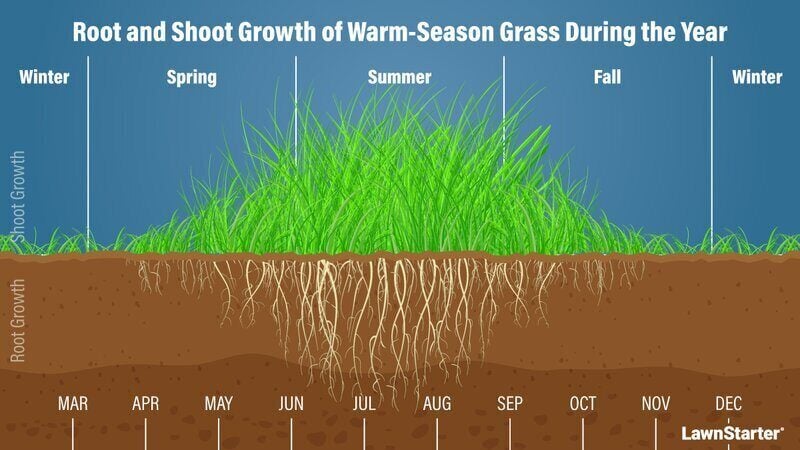
Bermuda, buffalograss, and blue grama top the list of warm-season grasses, which are more drought-tolerant and use water more efficiently. Hopkins says that for areas like southern New Mexico, Phoenix, and the rest of the hot Sonoran Desert, warm-season grasses are the top choice.
Powers, who is based in the southern New Mexico city of Las Cruces, says Bermudagrass is the choice there. Its resiliency and good performance with low inputs make it the top choice for home lawns, playing fields, and golf courses.
Desert Tolerance by Grass Type
So, which is the best grass for a desert climate? The University of Nevada offers a breakdown:
- Bermudagrass does well in full sun but produces a lot of pollen. An aggressive grass, it can tolerate low maintenance and poor, unimproved soils.
- Zoysiagrass is tough. Wear-resistant and tolerant of desert soils, Zoysias can survive in moderate shade and are very resistant to foot traffic. Unfortunately, Zoysias are slow to establish and slow to recover from damage.
- Buffalograss is descended from North American prairie grasses. That means drought tolerance and low water and fertilizer use. It’s not very wear-tolerant and does better in the full sun.
- St. Augustinegrass has the best shade tolerance of any warm-season grass. It’s used to replace Bermuda in shady areas and is tolerant of desert soils. It’s also a slow grass to establish and may have difficulty surviving low winter temperatures.
- Seashore paspalum has become a mainstream warm-season grass since its early days as a specialty, salt-tolerant grass. It’s tolerant of drought and desert soils with a moderate tolerance for wear.
And cool-season grasses aren’t entirely out of the picture, even in warmer climes:
- Tall fescue can grow in the transition zone found in the Mojave Desert, tolerating a wide variety of soils.
- Ryegrass can be used to overseed Bermuda for the winter. And some more heat-tolerant varieties have shown potential for year-round use.
New Desert Grass Varieties
You may soon have more choices, too, as turfgrass researchers breed new varieties that stand up better to low-water use.
Researchers are currently working with Bermudagrass strains to withstand colder temperatures, Powers says. Existing varieties shut down in the winter when soil temperatures drop below 60 degrees.
A Bermuda that stays active through winter could help golf courses and home lawns stay green and lush year-round. It also means that Bermuda’s water-saving qualities could spread to more northern, cooler climates.
Establishing Your Desert Lawn

Knowing your soil is just as important as choosing the right grass if you want a successful, sustainable lawn in a dry climate.
“Get a soil test,” Hopkins tells homeowners looking to establish a new lawn. Most soils in her area are sandy and contain less than 1 percent organic matter. She recommends peat moss or other organic material to get that up to 5 percent.
When establishing your lawn, the University of Nevada Cooperative Extension recommends a few extra steps:
- Add fertilizer, preferably a high-phosphorus starter fertilizer, according to the instructions.
- Amend the soil with 2-3 inches of compost.
- Cultivate the soil to a depth of roughly 1 foot, and remove any large rocks from the soil surface.
- Roll the future lawn area using a grass roller, but make sure not to compact it. Your foot shouldn’t sink into the dirt more than half an inch when you walk on it.
Managing Your Lawn’s Soil
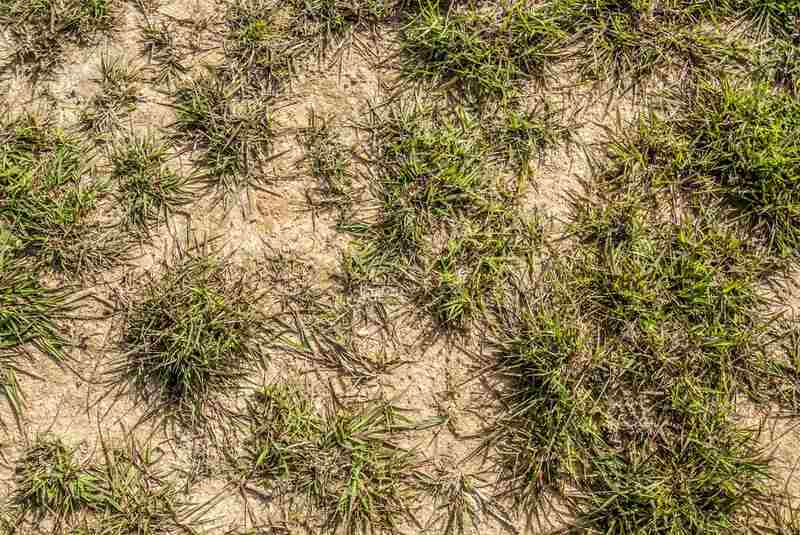
Once you’ve got the grass down, the soil underneath plays a crucial role in managing the water available to the lawn. Soil is a reservoir for water storage, says the Texas A&M Agrilife Extension Service. Pore space, which can hold air or water, makes up for as much as 50% of the soil itself.
So, here are some things to remember when managing the soil under your lawn:
Lawn maintenance practices are important: Desert climate soils need aeration and dethatching. Hard, compacted soils allow water to run off before it reaches the grass root zone.
Watch the infiltration rate: The infiltration rate is how well water seeps into the soil. Dry soil may have a very high infiltration rate at first, but once it’s saturated, water will just run off. Texas A&M also explains that layers of compacted soil, gravel, or clay can impede water movement.
Amend the soil if needed: Add organic matter, calcined clay aggregates, gypsum, or lime to amend the soil. They can alleviate surface compaction and increase infiltration rates. This will help you get a lot from a small amount of water.
Make the Most of the Water You Use
“Water is the No. 1 thing that can make or break any turfgrass system,” Powers says. In some parts of the country, turfgrass irrigation can account for 50 percent or more of city water usage in the summer. So, it’s important to be careful about how you irrigate and effectively use that water.
First, know your grass type and how much water it requires. Hopkins recommends an annual irrigation audit using a tuna can or another vertical-sided container. Set the cans out on your lawn in different places while your sprinklers are running to see how much water is actually making it to your lawn.
Be Mindful of Evaporation Rates
Your lawn loses water both from the soil and the grass, so you want to make sure that the soil holds onto as much water as possible.
Where your soil falls on the scale of water loss and retention depends on its makeup. Sandy soils allow water to soak in faster but don’t hold as much. The opposite is true for clay and loamy soils. Improve your soil with soil amendments to adjust its water retention.
Water Loss and Irrigation
Your local Extension can help you determine how much water your grass needs and how much it is losing to evaporation.
But you don’t have to replace all that water, according to New Mexico State’s Extension service. All turfgrasses can survive without replacing 100% of water lost to evaporation. But just how much below 100% depends on the type of grass.
There are plenty of choices on how to replenish that water. But the option that combines high-quality turf and water conservation is a pop-up sprinkler system. When you see the best lawns, you can bet they’ve got an underground irrigation system installed, Powers says.
Tips for Reducing Evaporation
It takes more than installing a sprinkler system to get the best results. Direct evaporation from sprinklers takes at least half that water in desert climates.
There are a few things that can help reduce your water loss:
- Set sprinklers for a low trajectory.
- Irrigate early in the morning.
- Set sprinklers for low pressure with as large a nozzle as possible.
- Maximize sprinkler overlap.
Your local Extension agent will have the latest evaporation measurements reported by weather stations across the country. Or you can install a computerized irrigation controller: It will adjust your sprinkler settings according to daily evaporation rates, temperatures, and rainfall data.
Water-Wise Management
Another consideration for desert lawns: “cultural practices” — how you fertilize, mow and irrigate. These lawn-management practices can go a long way in saving water.
Hopkins says one mistake is not sharpening lawn mower blades. Dull blades rip and tear the grass, stressing the plant and increasing its need for water. Keep those blades sharp, she says, and cut the grass higher. She recommends a cut of 2 to 2½ inches in height.
And Texas A&M reports that excessive thatch accumulation can lead to excessive evaporation, as water in the thatch layer evaporates easier than in the soil.
Practice Good Lawn Care
A healthy lawn reduces the need for water, so practice good, basic lawn care.
- Fertilize only when the grasses start to come out of dormancy and green back up.
- Don’t mow when it’s wet. Put another way, mow the lawn when it’s dry.
- Water early in the morning, as early as 4 a.m., when high temperatures won’t steal water that should be making it to your lawn.
- If you buy a new home, check the settings on the irrigation system. Many times, those sprinklers remain calibrated for establishing a lawn. That leads to higher water usage. Once a lawn is established, those settings need to reflect the smaller amount of needed water.
“Some people think the water you need is a lot more than what the grass actually needs,” Powers says.
Opt for an Ecolawn
One option for the water-wary is an ecolawn. It resembles a typical grass lawn — but without as much water input.
Oregon State University Extension Service defines an ecolawn as a low-input alternative to a conventional lawn. Instead of grasses such as Bermuda or Kentucky bluegrass, it uses a mix of broadleaf plants and perennial grass species. That mix stays green through dry summer months and needs less water than conventional grass lawns, with little or no fertilizer.
An ecolawn needs mowing only once every two or three weeks, and once established, uses one-quarter to one-third the water of a normal lawn.
Seed mixes for ecolawns are commercially available. A proper mix usually includes::
A dwarf perennial ryegrass that’s noncompetitive and stays green in the winter. It may go dormant in the summer heat, depending on irrigation.
Yarrow and clover, both drought-tolerant and green through the summer, round out the most common mix.
Flowering broadleaves, including English daisy and Roman chamomile, are used in some mixes.
Xeriscaping
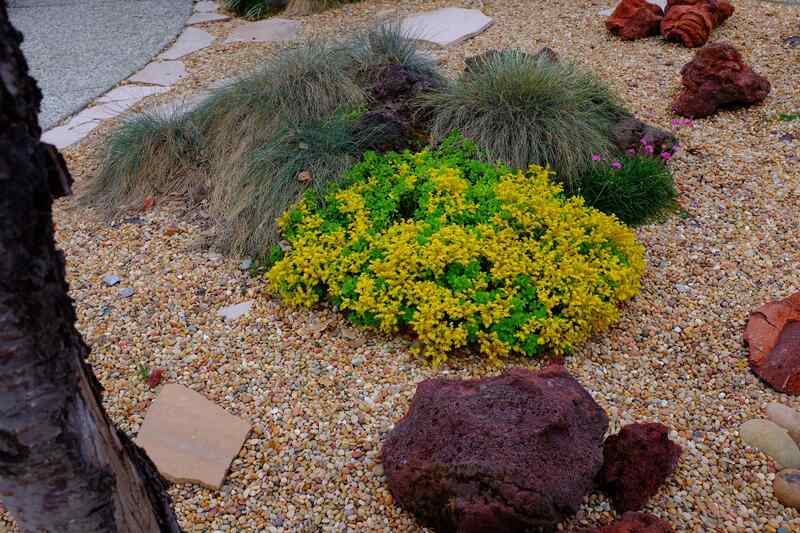
If downsizing the grass cover and ramping up landscaping is an option for your lawn, xeriscaping could be the way to go.
Xeriscaping is essentially landscaping in a dry climate. It’s likely what most people picture as desert landscaping. But yes, it can include turf.
Powers notes that many people in his area keep a small lawn surrounded by xeriscape-style plants in the front yard, saving the big lawn for the back. But Hopkins cautions about mixing and matching. Turf needs more water than native, drought-tolerant plants. Overwatering certain species, such as juniper trees, will shorten their lifespan.
Planning a Xeriscape
To develop a xeriscape plan for your landscape, focus on use. Plan pathways and areas of bunch grasses or ornamental grasses versus open spots of turf, and where to place your irrigation system.
This is a great time to get some help from your local Extension. Agents can recommend suitable native plants and wildflowers as well as the perfect drought-resistant native grasses.
As you develop your plan:
- Group plants with similar needs for water, sun, and soil together in zones.
- Then examine your soil and amend it accordingly. Design an efficient irrigation system for the entire layout.
- Xeriscaping doesn’t have to be all gravel and cacti. Turf can be a valuable part of the xeriscape but err on the side of caution. Use it only where you need it.
- Lastly, mulch and add ground cover where needed to help stave off evaporation and keep out weeds.
Grass Can be Good
Some may wonder if a turfgrass lawn is the best choice in a desert community. But turfgrass is good for environments like those in New Mexico, Powers says.
In a high-wind area, turfgrass staves off erosion and provides low-cost, high-quality, low-maintenance recreation surfaces, and cools the ambient temperature. That’s a big deal in places like Las Cruces, where there were 18 days that topped 100 degrees in July.
So, not only can you have that perfect, lush green lawn in a desert climate. You may just be doing the environment a favor by having one.
FAQ
In the United States, desert climates exist mainly in the Southwest: Arizona, New Mexico, Texas, Utah, Nevada, and California. But desert areas exist in more-northern states, including Colorado and Oregon.
Native trees are the best choice for landscaping your yard since they don’t need a lot of water. Palo verde, velvet mesquite, and acacia are among the best shade trees to plant in Phoenix if you’re looking to create shade. Here are a few other good tree options for desert areas:
● Native Plants for California (including trees)
● Native Plants for Texas (including trees)
● Best Native Trees to Plant in Denver
● Best Palm Trees to Plant in Phoenix
● Best Shade Trees for Salt Lake City Yards
Look for drought-resistant ornamental grasses that are native to your area. For tall grasses, options include purple feather grass, zebra grass, and pampas grass. Options for low-growing grass include Mexican feather grass, blue fescue, and purple love grass. Any native grass in your area is likely to be a good fit.
When to Call in a Pro
There are many resources out there to help you choose the best grasses or plants for your lawn in a desert community. However, if the prospect of installing a sprinkler system feels a bit overwhelming, consider calling a local sprinkler installation professional. Your local pro can help you choose the best system and placement so that your lawn can thrive in the desert.
Main Image Credit: Tony the Marine (talk)/ Wikimedia Commons / CC BY-SA 3.0


